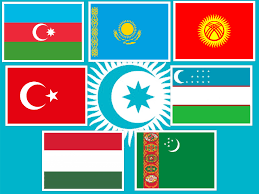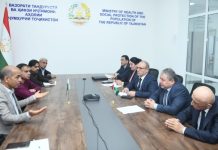Authors:
1.Professor.Rasulev Abdulaziz Karimovich, Deputy Director of the Research Institute of Legal Policy under the Ministry of Justice of the Republic of Uzbekistan, Doctor of Science in Law.
2.Khujayev Shokhjakhon Akmaljon ugli, Head of the Department of Intellectual Property Law at Tashkent State University of Law, PhD in Law
In the conditions of modern realities, cooperation between states is more pragmatic and dynamic. More and more, the place of universal international organizations began to be occupied by regional organizations. Therefore, recently, many countries prefer regional organizations. It is often regional organizations that create the most effective platform for mutual cooperation between States, taking into account national interests. One of such regional organizations is the Organization of Turkic States.
The history of the organization provides for three stages of transformation. Back in 1992, a Summit of Turkic-speaking countries was convened, which was the first step for integration between Turkic-speaking countries. From 1992 to 2009, nine summits were held, which resulted in the signing of the Nakhichevan Agreement on the formation of the Cooperation Council of Turkic-speaking States (the Turkic Council). And already in 2021, the Council was renamed the Organization of Turkic States (OTS). This year’s summit in Samarkand is the first OTS summit, and therefore interest in this event is as high as ever.
Today OTS unites five countries – Azerbaijan, Kazakhstan, Kyrgyzstan, Turkey, Uzbekistan. Two more countries have observer status – Turkmenistan and Hungary. About 173 million people live in these countries, which is more than 2% of the world’s population. These countries also account for more than 3% of global GDP calculated by purchasing power parity.
The uniqueness of the OTS is expressed in the fact that this organization has multifaceted areas for cooperation. According to article 2 of the Nakhichevan Agreement, both issues of strengthening and supporting peace and security, as well as issues of promoting effective regional and bilateral cooperation in political, trade and economic, law enforcement, environmental protection, cultural, scientific and technical, military-technical, educational, energy, transport, credit and financial and other areas of common interest. In turn, OTS aims to create favourable conditions for trade and investment, further simplify customs and transit procedures, as well as expand cooperation in the field of science and technology, education, health, culture, youth, sports and tourism, popularization of the great cultural and historical heritage of the Turkic peoples.
To achieve these goals, 6 structures function under the auspices of the OTS – the International Organization of Turkic Culture (TURKSOY), the Parliamentary Assembly of Turkic States (TurkPA), the International Turkic Academy, the Foundation of Turkic Culture and Heritage, the Turkic Chamber of Commerce and Industry, the Representation of the Organization of Turkic States in Hungary. Such an organizational structure is aimed precisely at the effective implementation of the tasks assigned to the OTS.
The economic effect of cooperation within the framework of OTS can be clearly seen on the example of Uzbekistan. In 2021, Uzbekistan conducted trade operations with OTS countries in the amount of 9.3 billion US dollars. Their share in Uzbekistan’s foreign trade amounted to more than 22%. In general, in comparison with 2016, the volume of mutual trade between Uzbekistan and the countries of OTS in the last year increased by almost 3 times.
In our opinion, promising areas of cooperation within the framework of OTS are:
The first is the expansion of economic ties and the volume of mutual trade. It is the issues of economics that are the most relevant today. The strengthening of the economy should be accompanied by the implementation of joint projects, improvement of infrastructure, etc. This goal also corresponds to the strategic document “Vision of the Turkic World 2040” adopted at the 8th summit last year. This document indicates the importance of creating prosperous societies in the OTS States, taking into account economic integration.
Within the framework of the first direction, the ideas of creating an Investment Fund and a Development Bank within the framework of OTS are also promising. Such projects will allow countries to coordinate their efforts and manage investments more effectively.
In this direction, it is important to note the expansion of investment projects. In particular, the implementation of mutually beneficial investment activities is in demand for the member countries of the organization, including Uzbekistan. In 2017-2021, the member countries of the OTS invested 2.5 billion US dollars of foreign direct investment in the economy of Uzbekistan (10% of the total volume of foreign investment during this period). Of these, more than 1 billion US dollars, or 41%, was invested in 2021. Since 2017, the growth of investments from the OTS countries to Uzbekistan is about 30%.
The second is the improvement of transport and logistics infrastructure. In the near future, the main focus will be on simplifying transport and transit procedures in the member States of the OTS, including through the use of modern digital technologies. First of all, we are talking about eTIR, ePermit and eCMR systems. In November last year, a pilot project “Digital Shooting Range” was launched between Uzbekistan and Kazakhstan, and in March this project also covered Kyrgyzstan. For the first time in the world, the organization managed to launch the ePermit project between Uzbekistan and Turkey in a test mode, and at the next stage there is an agreement with Kazakhstan on the implementation of this project.
In our opinion, special attention should be paid to electronic document management, which is one of the main elements of digital logistics. Experts say that electronic document management allows you to reduce costs and delivery times by 20-40%, minimize time losses at all stages of relationships with customers, shippers and recipients of goods.
In the future, using the possibilities of digital technologies: the ecosystem of digital transport corridors, digital technical regulation, the use of navigation fillings, as well as the digitalization of railway transport will significantly strengthen the relationship, which will contribute to the further development of trade and economic relations and the growth of the economies of the OTS countries.
In terms of improvement of transport and logistics infrastructure, attention should be paid to removing economic barriers to trade through the East-West corridors through the Caspian Sea. In our opinion, the phased implementation of the “Turkic Corridor” is important, within the framework of which customs procedures will be simplified and harmonized.
The third is digital transformation. Today, digitalization is becoming one of the most priority areas of development for any state. Therefore, this issue is of the greatest relevance for OTS. – In this direction, the goals were indicated in 2021 in the strategic document “Vision of the Turkic World 2040”. The document provides for the establishment of intraregional digital communications, which allows improving the telecommunications infrastructure.
Taking into account the special attention to artificial intelligence technologies, this issue should also be given attention. In particular, such technologies could be applied both to the development of the economy and industry, and to improve urban infrastructure. According to many experts, it is artificial intelligence technologies that can solve the issue of traffic management, logistics and public order.
The fourth is the strengthening of cultural and humanitarian ties. Historically, the peoples of the participating countries of the OTS have the same roots. Therefore, the expansion of cultural and humanitarian ties is of particular importance for the OTS countries. In particular, cooperation between educational and scientific institutions, academic exchange, joint cultural events. In this regard, it is necessary to expand the horizons of cooperation within the framework of the Organization for the Joint Development of Turkic Culture and Art (TURKSOY).
Summing up, we can say that OTS is a unique regional organization uniting Turkic-speaking countries, with prospects for development in many areas. It is the perspective of this organization and the consideration of the national interests of the members of the organizations that contributes to increasing interest in it. Therefore, for all members of this organization, including Uzbekistan, strengthening mutually beneficial cooperation within the framework of the OTS will ensure comprehensive development and stability, increase economic growth and stimulate the development of countries.






